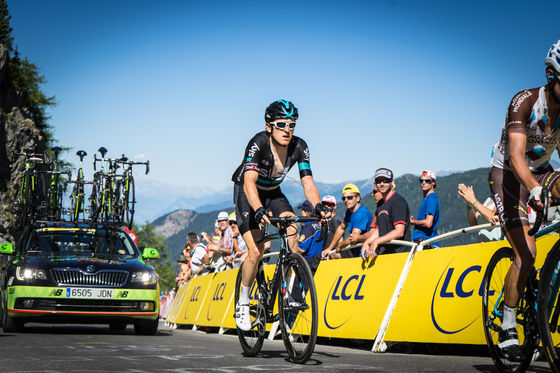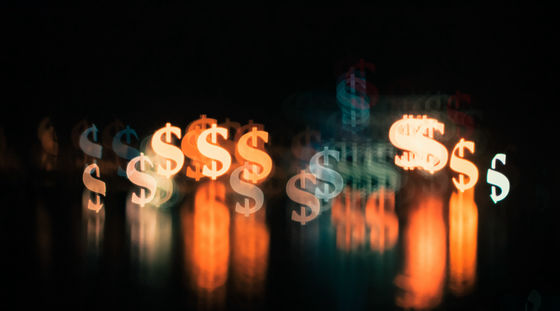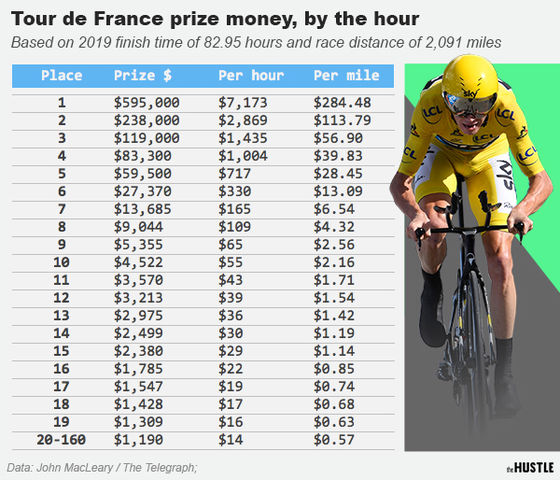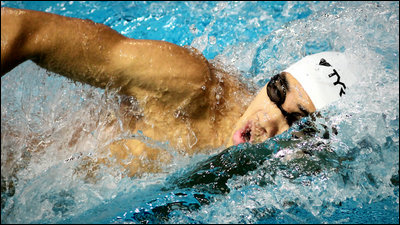How profitable are the three major sports events in the world, the Tour de France?

The
The economics of the Tour de France
https://thehustle.co/the-economics-of-the-tour-de-france/
Although the event was temporarily postponed due to the new coronavirus infection, the 2020 Tour de France will be held from August 29th to September 20th for about three weeks. Cyclists running in the Tour de France can run around 3300km at a blazing speed of up to 63MPH (101km/h). Cyclists from more than 180 countries participate in the race each year, and cyclists straddle road bikes in national, team, and sponsor emblems.
Local video has arrived! #Fog 1st class Ursale (11.1km, 8%) #Independent lead Marc Hirushi (SUN) #1 minute 21 seconds behind the run #Main group 1 minute 33 seconds behind Hirushi
— J SPORTS???? Cycle Road Race [Official] Tour de France currently held???????? (@jspocycle) September 6, 2020
Cycle * 2020 Tour de France ninth stage - Pau - Raransu] 154Km (mountain) Https://T.Co/SobBndMZ1i # TDF2020 #Jspocycle # SKY Free pic.twitter.com/irZPo912fa
Despite being a globally popular tournament, The Hustle notes that the economic impact of the Tour de France remains 'mysterious.'
Before explaining how the Tour de France earns money, it is necessary to understand that the Tour de France is a competition born from financial needs in the first place. .. The Tour de France was first held in 1903 and was organized by the French sports newspaper L'Auto. At that time, Lotto was thinking about ways to increase circulation, and one of the editors, Mr. Géo Lefebvre , devised the largest road race ever in France.
The 1st Tour de France held in 1903 was a great success and succeeded in extending the daily circulation of Lotto from 25,000 to 65,000. As a result, Lotto's rival newspaper Le Vélo went bankrupt, and the circulation of Lotto increased 34 times in 30 years.
The following is the paper when L'Auto announced the Tour de France in 1903.

In 1940 during the Second World War, Lori's lead author and race chief
From World War II to the 1960s, Lequip monetized the Tour de France in different ways. For example, to auction a Tour de France course, run a corporate car called a 'caravan corps', post a physical advertisement along the route, or sponsor a tour by a local company. He seems to have allowed it.
As you can see from these techniques, the Tour de France at that time used the spectators who gathered to watch the tour as a source of revenue. However, there was concern about that method at an early stage, and it seems that there was a problem with too many affiliated companies and sponsors. Pierre Bost, who is a journalist at that time, a 'spectacle also 60 cars flashy track of running a country town is what should be very ashamed' 'It's sad ugly, is the smell spectacle of vulgarity and money,' wrote is.
Even so, it seems that Tour de France at that time was operating in the red. However, since the Tour de France owner became the current ASO in 1965, the tour has changed significantly. First of all, ASO will focus on increasing the global audience of the tour, starting from its expansion into TV broadcasting. As a result, Tour de France revenues increased 20-fold between 1980 and 2010, with broadcast rights central to the current Tour de France business model.
The breakdown of the income of Tour de France as of 2019 is as follows. Broadcast rights account for 55%, advertising and sponsorship fees account for 40%, and the remaining 5% comes from the host cities.

Tour de France is a popular content broadcast in 186 of 195 countries around the world. More than 260 cameras and more than 6 aircraft have been mobilized for live distribution of the race, and only a contract with
Advertising and sponsorship fees, which account for 40% of revenue, are also a genre that is gradually evolving. As in the past, 33 brands have paid $250,000 to 600,000 (about 27 million to 64 million yen) to post their logo on the caravan team. This car forms a line of 250 cars, and distributes 15 million items (T-shirts, soaps, key chains, etc.) to fans who came to watch the game during the 21-day race.
In addition, in the Tour de France, various jerseys such as the yellow jersey “Mayonnaise” worn by the player ranked first overall and the green “Mayot veil” indicating the point prize winner Exists, and the sponsor's logo also appears here. For example, LCL, a French bank that publishes its logo on the Maillot Jeanne every year , pays $12 million (about 1.3 billion yen) as a sponsor fee each year .
There are dozens of other sponsor contracts in the Tour de France, and Century 21 in Japan also has sponsor contracts.
In addition, the towns that serve as relay points for the race may pay money to invite the Tour de France. Unlike the Tour de France, there are reports that Denmark paid $3.9 million to invite Giro de Italy , so the Tour de France should be more profitable.

The Tour de France sponsor ASO hasn't published its revenues for a long time, so we can't get a detailed view of the revenues earned by the whole tour. However, from the data released by ASO, The Hustle estimates that the annual income of Tour de France will be about 60 million to 150 million dollars (about 6.4 billion to 16 billion yen). Based on historical revenue data, the Tour de France profit margin is about 21%. Therefore, ASO is expected to generate annual profits of 12 to 30 million dollars (about 1.3 to 3.2 billion yen) by holding the Tour de France.

The Tour de France in 2020 has 178 players from 22 different professional teams.
The following graph summarizes the financial data of the three teams that participated in the Tour de France in the past, various such as the salary of athletes, equipment costs such as bicycles on which athletes ride, advertising / marketing costs, medical costs etc. The costs are summed up. Basically, the majority of the team's spending (74.5%) is the salary of the player, and the next highest is equipment cost (9.3%).

In addition, Team Sky, which is one of the teams that revealed the cost of participating in Tour de France, details the cost in the following movie.
The cost for a professional team to join the Tour de France easily exceeds $20 million a year (about 2.1 billion yen).
What is of concern here is how the professional team raises funds. Basically, professional teams participating in the Tour de France cover the participation fee based on the sponsor fee. The sponsors are various things such as the bicycles on which the players ride, the gears used, the drinks for hydration, etc., but it seems that about 70% of the sponsor fee that the team gets is due to the title sponsor. The title sponsor is able to attach a logo to the naming rights of the professional team and the entire uniform, and the amount is about 5 to 15 million dollars (about 530 to 1.6 billion yen).
Below is a list of the title sponsors for the 22 teams competing in the Tour de France in 2020.

The title sponsors are basically insurance companies and telecommunications carriers, and they are almost exclusive. In the Tour de France, until the mid-1950s, only bicycle manufacturers were allowed to sponsor their teams. However, as bicycle sales surged in the 1960s, local product makers such as alcohol, cigars and face creams could also become sponsors. In addition, the live broadcasting of Tour de France has started, international companies around the world have become interested in Tour de France, and a professional license system that allows more profits to be introduced from here is introduced. It will be. As a result, from 1992 to 2014, the average budget of professional teams participating in the Tour de France will rapidly increase from $ 3.6 million (about 380 million yen) to $ 15.5 million (about 1.6 billion yen) It seems that it became.
The most popular sponsor companies in recent years are the companies in the oil-producing countries and the existence of millionaires. However, the question of how professional teams rely on wealthy individuals, such as

What is the financial situation of cyclists who actually run long distances in the Tour de France? For most of the first half of the 20th century, professional road race athletes were not paid and athletes used their cash prizes as a source of income.
The current total prize money of Tour de France is 2.7 million dollars (290 million yen), which is considerably lower than other sports, and the prize money that can be obtained even if you win the first place in the individual overall is 590,000 It is about 5000 dollars (about 63 million yen). Players in the 20th place and below can only win a prize of 1200 dollars (about 130,000 yen). And it seems that players who have won individual awards such as 'Mayot Veil' will be able to get prize money of about 24,000 to 30,000 dollars (about 2.6 million to 3.2 million yen).

As you can see, the current Tour de France is one of the most famous races in the world, but the prize money is not so delicious. However, it is not this prize money that is a significant factor in the players' income.
The majority of the player's income comes from sponsor contract fees, and it is said that a famous player can earn more than $6 million (about 640 million yen) annually. However, it is necessary for athletes to consider the parts that have nothing to do with the competition, such as maximizing the visibility of the sponsor's logo.
Many teams have suffered significant financial damage from the pandemic of the new coronavirus infection in 2020, and some players have agreed to cut 70% of their salaries to keep the team alive. That's why The Hustle notes, 'It may be time to rethink our business model as a sport.'
Related Posts:







